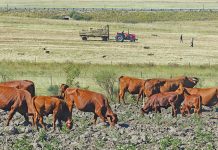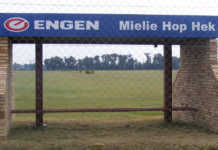What is the online milk exchange?
It’s a virtual marketplace where sellers of raw milk are able to present their produce to all interested buyers simultaneously. It’s a transparent facility where all parties have access to market statistics in real time as trading occurs.
Could you briefly explain how one goes about buying and selling milk online?
a. Sellers place their produce on the exchange, detailing volume available, quality (butterfat and protein percentages) and locality.
b. Buyers scrutinise the produce and select items of interest to them.
c. Buyers place bids for the selected produce.
d. Sellers accept the bids they find attractive and decline those which aren’t.
e. On acceptance of a bid, the buyer and seller are contractually committed to the transaction allowing for normal variances in daily volume and quality.
f. Deliveries and payments are made in the normal manner.
What is the MPO’s role in this exchange?
We initiated the process and will manage and administer it, so we play an important role. MPOSA’s CEO Bertus de Jongh and I will also serve as representatives on the board of Olmex Agriculture.
What were the motivating factors behind the initiative?
Primarily it was the need for a more transparent system of marketing milk and also to geographically delimit the sale and purchase of milk. The inability of alternative marketing exchanges, eg Safex, to meet the needs of the industry was also an important motivator.
How have farmers reacted to the announcement of the milk exchange?
Some very positively, others were cautiously positive.
What are the transaction costs?
There are no upfront costs to either buyers or sellers. There’s just a fee of 1% of the transaction (contract) value levied on each party, totalling 2% of the value of milk bought and sold via the exchange.
How are the trading contracts arranged?
A pre-formatted contract, prepared under the auspices of the MPOSA, is generated by the system on conclusion of a successful trade as detailed in clause (d) and (e) above.
What is the MPO doing to protect itself and traders from potential contract grievances?
Users of the system do so under terms and conditions whereby the MPO and its subsidiary organisations are protected against any claims. Traders have the opportunity to scrutinise the contract prior to using the system, and to familiarise themselves with the terms and conditions of trading.
How often are buyers and sellers able to trade?
The exchange is open for spot (short term or once-off) trading 24/7. Contract trading is on a more formal basis, one day a month and provisionally the third Thursday of each month.
What is the MPO’s strategy for involving the larger milk buyers as well as farmers?
To constantly identify ways in which we can implement structures or processes that will allow dairy farmers to conduct business in a competitive and fair environment. The sustainability and growth of the industry is paramount.
It’s been said that certain regional markets have been overproducing, while some markets have had a shortage. Will the milk exchange influence the value chain?
By giving buyers and sellers access to each other nationally, regional imbalances will be minimised. The value chain will benefit producers in a region where overproduction exists by servicing areas where a shortage exists.
Smaller producers are susceptible to the whims of milk buyers, particularly in terms of volume. How will they benefit?
By having a wider base, smaller producers will have access to a larger range of buyers, some of whose requirements are low-volume. They will also be encouraged to form syndicates, improving their collective market strength.
What is the process of registration and trade?
Buyers and sellers register, furnishing necessary details of their respective operations – company/personal details, addresses, VAT details etc. Buyers and sellers log on under password protection. Sellers offer their produce, detailing daily volume, quality and locality. Buyers short-list produce of interest to them and bid for the produce they have short-listed. Sellers accept or decline bids. Contracts are generated for accepted bids, and e-mailed to the respective parties. |fw








